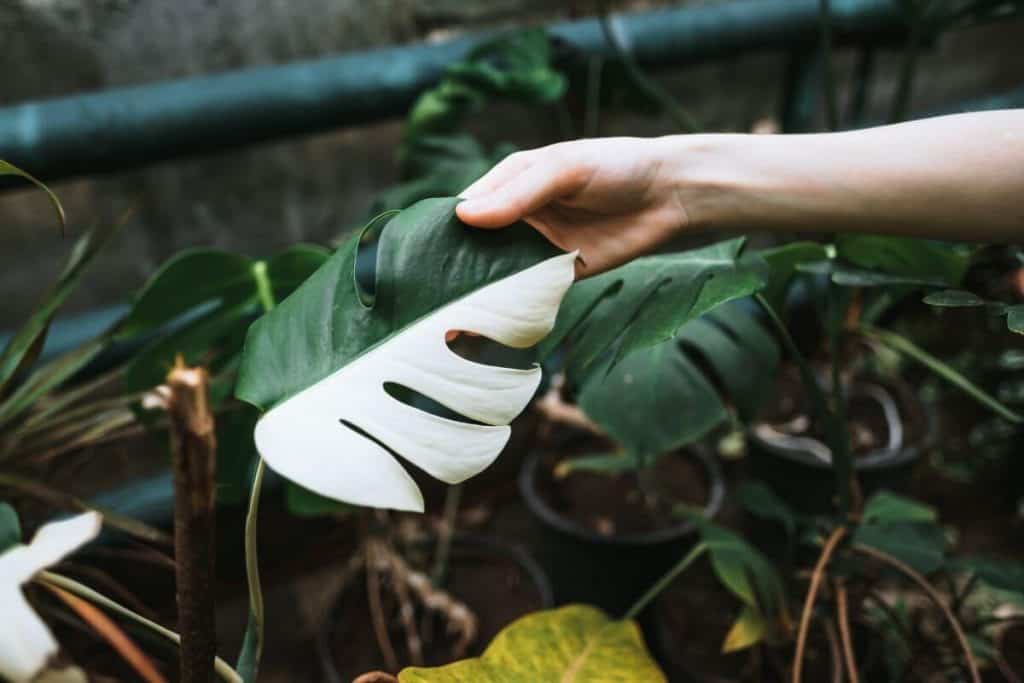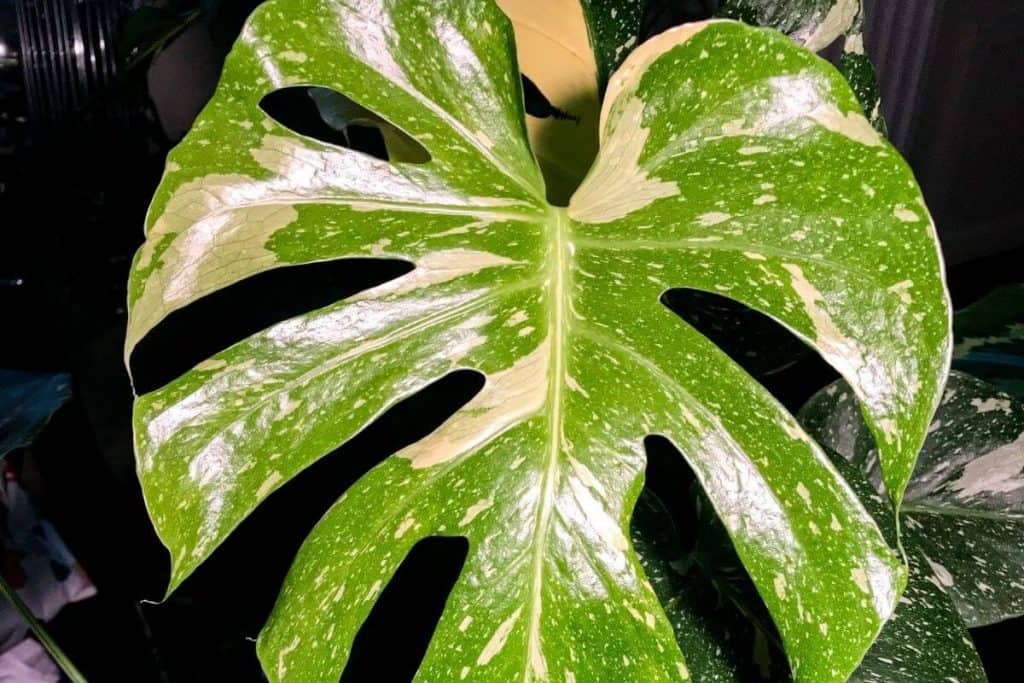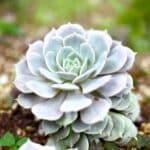The Monstera Variegata, the dream plant of all present-day houseplant lovers, is a lovely houseplant that can add beauty to your home or office.
It is a vining tropical plant native to Southern Mexico, Panama, and tropical regions. It is one of the many Philodendron subtypes.
Due to its pierced leaves, it’s mostly regarded as a Swiss Cheese Plant and possesses impressive foliage. The plant can grow as large as 9-meters and has gorgeous green color leaves with shades of silver or yellow.
For strong and healthy growth, you must understand how to care for Monstera Variegata, like watering and fertilizing, amongst others – and that’s what’s you will learn here today in this Monstera Variegata care guide.
Let’s get started!
Table of Contents
Monstera Variegata Care and Growing Tips
Natural Habitat
The Monstera Variegata, just like other Monstera varieties, is native to tropical South America. The Latin name of the genus means "monstrous" or "abnormal" and means the very large, somewhat holey leaves that are monster hallmarks.
Variegated Monstera’s parent plant, Monstera deliciosa, originated from southern Mexico and northern Panama. It grows as an evergreen shrub suspended between the earth and the sky. The seeds of monstera plants germinate under the shades of the tropical forests.
Its seedlings develop into huge climbing vines that use aerial roots to attach themselves to the trees, just as epiphytes, or "tree-loving" plants. But Monstera plants equally send a larger root down to the ground to make contact with the soil as time goes on.
This growth habit is known as hemi-epiphytic in botany, which translates to "partially tree-loving." Monstera leaves are so large as they are designed to collect as much sunlight as possible in the filtered conditions of the tree canopy.
The above, added to their aerial roots that can very efficiently absorb nutrients, makes Monsteras of any kind well-suited to dim indoor conditions.
Depending on the type of variegated Monstera, the variegation began either as a spontaneous genetic mutation by a specimen or developed in a lab.
Related Post: Monstera Obliqua Care
Monstera Variegata Light Requirements

Every Monstera Variegated plant variety needs a bit more light than its non-variegated (all-green) counterpart, as they are naturally very adaptive when it comes to light requirements.
In other words, they will surely thrive under low light conditions, especially the full green version, but not when it's too dark; otherwise, you'll be asking for too much.
In their natural habitat, they grow in the understory of the jungle, which has relatively low light conditions, but they will also climb up trees through their many aerial roots in search of more light.
To better the condition of your Monstera plant indoors, you've to locate the brightest window you can but be careful not to let them contact too much direct sunlight.
You can allow it to receive at least two hours of sunlight (early morning sun or late afternoon sun), but anything longer than that will be disastrous to their health condition and growth. Therefore, keep them away from long periods of direct sun, especially mid-day direct sun.
If you happen to have a house around dark winter areas such as Ohio and the likes, with short days, some direct sun in the winter is recommended and essential.
If you don't have a good area in your home or office with natural light, you are free to supplement with a good grow light.
Monstera Variegata Watering Requirements
Watering of the Monstera Variegata is not difficult if you follow the due care procedure. First, you have to evaluate the overall state of the plant, including the watering requirements.
In other words, for proper care of the plant, it is essential to observe as often as possible to know when it needs water.
Most people tend to water because they feel all plants need water or because it looks dry. But that shouldn't be the reason for doing that.
You have to follow the due procedure thus; once you have watered, allow for a few days before assessing the soil's moisture level by sticking your fingers into the soil to know if there is still any moisture left underneath.
If your assessment tells you it is dry, at least 2 inches at the top, then you're free to water again. But if it remains wet, you've to be patient for maybe two or three more days (depending on how moist the soil was) before watering.
This is because, just like other Monsteras, the Variegata thrives better in soil that's often lightly humid. They are epiphytes and possess aerial roots; hence they cannot do well in too much water. It is advisable to water just once every week and in the morning hours.
Again, endeavor always to move or rotate your Monstera Variegata plant as often as possible to enable it to grow on the same wavelength. Also, make sure you dust their leaves once in a while to give room for proper photosynthesis.
Humidity & Temperature
The best temperature range for the Monstera Variegata is 65 to 80ºF (18 to 27ºC). Any temperature less than 50ºF (10ºC) for too long will damage your plant and affect its growth.
Humidity-Wise, the Monstera Variegata thrives better in high humidity. Most people spray their plants every day.
However, the plant does best in high humidity and tolerates it when you do not spray it. So, the average humidity requirements for the Variegata variety are even higher than for the pure green variant.
Soil Requirements for Monstera Variegata
The Monstera Variegata can tolerate almost any soil, but it is best to use 2 to 3 parts of good potting soil mixed with 1 part perlite. You can also decide to mix in some orchid bark. Again, you can do equal parts soil, perlite, and bark mix.
Although this is a great mixture, it tends to dry out quicker, but it is the best mixture for your plants. There is no magic mix. In as much as you have well-drained soil and sufficient air to the roots (additives like perlite and orchid bark accomplish that), it is okay.
Related Post: Philodendron Giganteum Care And Growing Guide
Fertilizer Needs
Fertilizing is vital for indoor plants, including the Monstera Variegata, but the problem is that most people tend to overfeed, believing it is best for growth. That notion is wrong, as over-fertilizing a Variegated Monstera can cause problems.
A regular Monstera plant should be fertilized pretty regularly in the spring and summer months (about monthly); therefore, the Variegated Monstera can be fertilized about half of that. During the winter season, you can fertilize them once every two months and fertilize even less.
Meanwhile, we recommend liquid fertilizer as the best for this exercise. If your area lacks a lot of sunlight during the winter periods, avoid feeding them too often because it won't help in their growth in any way; hence, they need adequate sunlight.
Also, Overfeeding can make a salt buildup around the plant's roots and stop it from soaking up water as efficiently as it normally does.
Endeavor to give your plant a complete shower and soil rinse every few months anyway, as it will help remove any salt/mineral buildup.
I use a liquid Miracle Grow indoor plant fertilizer that I dilute with water. There are many varieties, but I find the liquid fertilizer easiest to use, so I always lean in that direction.
Planting (Potting & Repotting) Monstera Variegata
Potting & repotting of the Monstera Variegata is your decision to make. As soon as you've decided to repot your plant, you'll need to wear protective gloves to keep them clean, to prevent the soil from darkening your nail color.
Then, use some cloth as a mat, or an old blanket or even a film or a sack, to protect your floors from getting dirty. Then you can proceed with the following repotting steps;
- Pour some fresh soil in a separate pot and crush it a bit using your hands. You can also add the soil later from the old container too. Ensure you mix it all properly.
- Indent/squeeze the old container from the outside to easily separate the soil from the pot. It can stick at times, which makes it hard to remove the plant without harming the root.
- Put the plant aside, being careful not to break its leaves. The good thing is that the plant can survive 10 minutes without the soil, so you don’t have to worry – 10 minutes is all you need.
- Mix the soil (check pt. 1) and start pouring it into the pot. Pay attention to the soil’s layer in such a way that the root is not too deep down nor too close to the surface.
- Shake the container to get rid of the air pockets.
- Center the plant on top of the layer of soil and hold it steady. Continue to add the soil with your other hand until the root is properly covered.
- Shake occasionally to get rid of the air pockets.
- To fasten the soil, tap it on top
- Keep the plant where you want (you already have the guidelines about the optimum setting).
- Clean up the mess you made.
How to Prune Monstera Variegata
Careful pruning can help the Monstera Variegata to maintain its colors. This goal is to strike a balance between the ornamental white patches and the necessary-to-life green patches.
If you discover a lot of white leaves in your plant, trim a few off. On the other hand, if there are many green leaves and your lightning seems adequate, then there is a need to trim some green ones using sterilized pruning shears.
Note that, just like every other Monstera variety, the Variegata doesn't require regular pruning.
How to Propagate Monstera Variegata

Propagation refers to the multiplication of plant collection from cuttings of the parent plant. The Monstera Variegata is somewhat rare; therefore, propagation is essential to get more of the plant.
The general method for propagation is by planting seeds or stem cutting, including this plant.
Related Post: Difference Between Philodendron and Monstera
Propagation from Seeds
Unfortunately, the seed reproduction method is, more often than not, highly unsuccessful. The variegation comes as a result of insufficient chlorophyll because of mutation in the cells.
Consequentially, planting from seeds is not a guarantee that the cells will develop the needed mutation. Likewise, sometimes the mutation in the cells can be genetic, and only, in this case, the reproduction from seeds can guarantee the variegation.
Propagation from Stem Cutting
The Stem Cutting Propagation Method reproduction of the Monstera Variegata guarantees the preserved variegation and provides an easy way of doing it.
Immediately you've decided to produce another of its kind; you need to be very careful which cuttings to make.
In this case, you have to examine your plant carefully before choosing a healthy-looking stem that is best for propagation. You may know the fit one when you see the inclusion of nodes, or at least one, as they are the sign that the cutting can grow.
Endeavor to use clan and sterilized tools like knives or scissors while cutting to prevent your plant from contaminating pesticides.
Ensure the cut is made underneath the node and allow two or three leaves on the one you want to separate because even the leaves you cut are essential and used for propagation.
Yet, having more leaves on them is reasonably necessary as it will help the photosynthetic process of the new plant, which helps to speed up their growth. After the cut, the next thing is to decide on which media to put your cutting before officially repotting, if necessary.
For the uninformed, the best time to repot is when your cutting has started to grow root. As for which media to keep your cuttings, you can put them in water, soil, or sphagnum moss. We'll explain the various mediums of putting your plant after cutting for proper propagation.
Propagating in Water
The first method should be what is known as the "beginners" method. It is done by putting the cuttings in a water container and wait for them to grow roots.
Meanwhile, it's best to use a see-through container so you see what is going on with your cutting because some of us might grow impatient to constantly check on it all the time.
While checking up on them, you can check if the water roots have different color (paler) than the roots developed in soil. Also, immediately it's time to plant, the cutting will first have to adapt to the soil to prolonged growth.
Propagating in Soil
Propagation in the soil is another alternative and a more favorable one than water propagation. However, this method is accompanied by uncertainty, as you are not quite sure what's going on beneath the soil.
The method works by preparing some soil in a pot and watering it moistened but not excessively wet.
Then, create a little hole inside the soil and place the cutting in it. Use the surrounding soil to cover the cutting and allow it for several weeks, as the most important thing is also to cover the node in soil. Ensure you water the plant once in a while.
However, like I earlier mentioned, this is a dangerous method, as it can sometimes look like you didn't do a good job, but once the new leaves start growing, know that the propagation has been a successful one.
If you can't wait for the leaves, there is another way to check what's happening, and it is by gradually and carefully pulling the leaves upward. Once you experience any resistance, it is a good sign that the operation was successful.
Propagating in Moss
Most people believe Propagating in Moss is the best way to propagate because of the antibacterial properties of moss. It boosts the growth of roots to enable your plant to develop at a higher rate.
This method requires you to place the moss in a container. Note that both fresh and dried sphagnum moss will do the trick.
Water the moss or even soak it in water (preferred for the dried one) and put the cutting in it.
Be very careful not to allow the moss to get excessively wet (we need not remind you that Monstera Variegata does not tolerate too much water) to prevent it from the unavoidable rot of the root.




